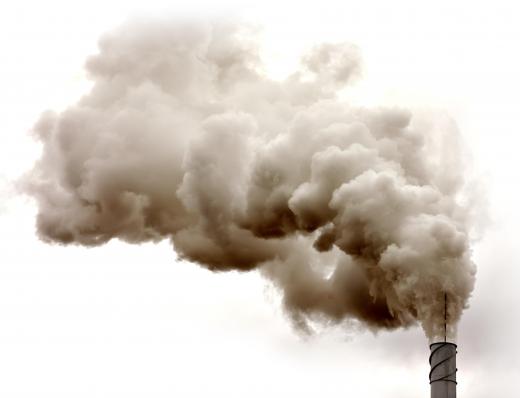A fume scrubber is a device that is intended to remove hazardous gases, fumes, and other air pollutants from the air. They are commonly used in industrial or scientific settings to remove by-products of industrial or scientific processes that can be harmful to people or to the environment. Many governments strictly regulate the amount of pollutants that industrial and scientific groups are allowed to release into the air. A fume scrubber is one way to manage the release of harmful substances into the air and adhere to the government-mandated rules. The gas released from the scrubber can be tested in order to determine whether or not a sufficient degree of purity has been achieved.
There are two types of fume scrubbers that are in common use: wet scrubbers and dry scrubbers. Wet scrubbers use a liquid scrubbing solution to collect hazardous particles from the gaseous industrial or scientific by-products. The hazardous gas can be sprayed with or forced through the liquid. When the particles come in contact with the liquid, they leave the air and remain in the liquid, thereby purifying the air. The somewhat-purified gas is then often released through a smokestack, hopefully free of most of the contaminants that could harm people or the environment.

In the case of a dry fume scrubber, little or no liquid is used in the scrubbing process. In general, a dry fume scrubber is exclusively used to remove acid gases from air. In a dry scrubber, a reactive, sorbent gas is added to the acid gas; this reacts with and neutralizes the hazardous acid gas. In some cases, this process forms solid salts that can be easily removed; in other cases, it is necessary for the dry scrubber to contain some mechanism for removing the remaining gas. In general, purely dry scrubbing methods are not entirely effective, so hybrid, partially-dry systems are often used to achieve greater purity.
In most cases, a fume scrubber is not able to convert the hazardous gas into a safer form, so waste disposal is still a concern. The wastes are usually still present in a liquid or solid form after the scrubbing process, and there are generally many regulations dictating exactly how the waste material can be disposed. In some rare cases, the products of fume scrubbing can actually be put to good use, but this is by no means common. Ideally, the remaining product can simply be moved to some general waste disposal facility. In many cases, though, further processing or long-term specialized containment is necessary.
